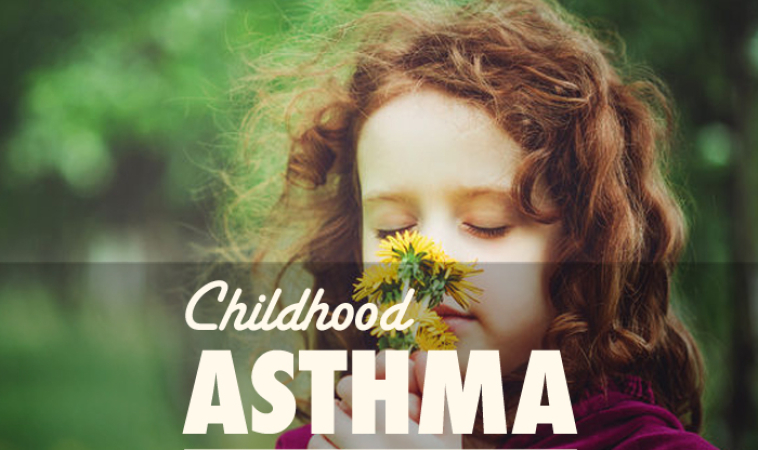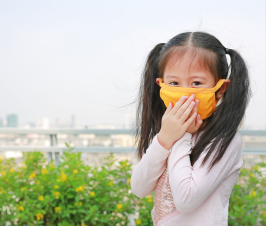The term asthma is generally used to describe any disorder of impaired breathing involving a reversible airway obstruction. It often occurs secondarily to a variety of external stimuli such as smoke, changes in temperature, emotional upsets or exposure to specific allergens. It is also seen more commonly in children than adults, and a relationship to foods such as milk, corn or wheat has been noted. A history of prior upper respiratory infection is also common.
Symptoms may range from mild to severe and include wheezing (more on expiration than inspiration), rapid and labored breathing, cough, tightness in the chest, shortness of breath and increased mucus with expectoration.
“Attacks ” of asthma quite often occur at night due to mucus buildup in the airways with lying down. Hypersensitivity reaction to an allergen or foreign-body inhalation must be considered in younger children who develop a sudden onset of difficulty with breathing and have had no previous history. If the asthma attack follows a cold and fever, then an infection may be present. Seasonal asthma is probably triggered by an environmental allergen which almost always has an underlying food allergen. If encountered during the winter months, consider house dust or a reaction to heating fuels. If the asthma occurs year round, consider animal dander or a reaction to synthetic fibers or food dyes.
Most persons experiencing an asthma attack will exhibit varying degrees of distress until the cause has been eliminated or the body is able to restore the balance. A sudden worsening of the patient’s respiratory distress or change in symptoms is a signal to the examiner that some type of intervention may be necessary and the person needs to see a physician. Pneumonia secondary to asthma can occur and needs to be considered if fever is present. Additionally, children with asthma should be monitored frequently if symptoms are present as the condition can progress rapidly. Status asthmaticus is an asthma attack that is unresponsive to injection with epinephrine or an epipen. This is a medical emergency that needs prompt attention at the emergency room.
What to do until the doctor is seen
- Often asthma attacks are accompanied by fear and anxiety so have the child breathe in and out more slowly.
- Reassure them that help is on the way.
- Note respiration rate and pulse. Obtain a temperature if possible either through an ear, forehead or axillary thermometer.
- Apply whatever home treatment you choose for the particular episode. After several of these attacks and/or consultation with your physician, it will be easier to determine which ones work.
- Monitor frequently, staying with the child until it has resolved.
- Contact your physician or transport to the nearest emergency room if at any time the condition becomes worse or you are uncomfortable managing things at home.
Homeopathic Medicinessuch as Arsenicum album, Chamomilla, Cuorum metallicum, Ipecac, Kali carbonicum, Lachesis, Natrum sulphuricum, Pulsatilla, Smabucus, Silicea, Spongia and Sulphur are some of the more common remedies.
Hydrotherapytreatments such as steam inhalation, heating compresses and hot foot-baths can also be used.
Botanical Medicinessuch as Coltsfoot, Mullein, Grindelia, Mint and Licorice are useful as teas or in tincture form.
Diet & Nutrition
- Consider that food allergies may be a cause of the asthma as they are often found clinically.
- Decrease foods high in arachadonic acid such as red meats and dairy products.
- Increase foods high in flavinoids and carotenes such as green leafy and colored vegetables such as carrots, red and yellow peppers.
- Increase foods and oils high in linolenic acid and ecosopentanoic acid (EPA) such as flax oil, walnuts, cold-water fish, herring, sardines and salmon.
- Increase foods high in quercetin such as grapes and onions.
This article is an excerpt from the Natural Medicine Pediatric Home Health Advisor
Thomas A. Kruzel N.D. is a naturopathic physician in private practice at the Rockwood Natural Medicine Clinic in Scottsdale, Arizona. He received a BA in Biology from the California State University at Northridge, and his Doctorate of Naturopathic Medicine degree from the National College of Naturopathic Medicine. Dr. Kruzel is also a board certified Medical Technologist. He completed 2 years of Family Practice Medicine residency at the Portland Naturopathic Clinic where he was chief resident prior to entering private practice. He also completed a fellowship in Geriatric Medicine through the Oregon Geriatric Education Center and the Portland VA Medical Center.
He has been an Associate Professor of Medicine at National College of Naturopathic Medicine where he has taught Clinical Laboratory Medicine, Geriatric Medicine and Clinical Urology. He is the author of the Homeopathic Emergency Guide A Quick Reference Handbook to Effective Homeopathic Carepublished by North Atlantic Books and Haug Publishers Germany, and has published numerous articles in The Journal of Naturopathic Medicine as well as other publications. He also is the author of theNatural Medicine Pediatric Home Health Advisor. He has been a member of the Alternative Medicine Review Editorial Review Board since 1997 and editor of the Clinical Medicine section of the Foundations Medical Textbook. He is also the past president of the American Association of Naturopathic Physicians and was selected as Physician of the Year by the AANP in 2000 and Physician of the Year by the Arizona Naturopathic Medical Association in 2003.


















